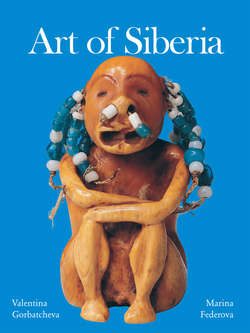Читать книгу Art of Siberia - Valentina Gorbatcheva - Страница 3
На сайте Литреса книга снята с продажи.
Introduction
ОглавлениеThe Evenki, the Yukaghirs, the Chukchi, the Koryaks, the Nenets, the Nanai people, the Yakuts, the Tuva people… Cradle of many cultures, Siberia constitutes an area that is rich in human traditions, as diverse and changeable over time as the region itself. The native inhabitants of Siberia, dwellers in the lands of far-northern and far-eastern Russia – by tradition reindeer-herders, horse-breeders, hunters of marine mammals and fishermen-hunters – have, over the millennia, evolved the means by which human communities may survive in this vast desert of extreme climatic conditions in northern Asia. Through their prolonged proximity to nature, the native inhabitants of the icy, Arctic expanses have learned to make a home in the wasteland, using every natural element at their disposal to create more than rude tents and campfires: they have become artists. The tribal cultures of Siberia express themselves in everything from the intricate designs on a walrus tusk, to the many-coloured glass beads on a woman’s dress, to the delicately carved child’s toy, to the ambiguously haunting shaman’s mask. In an environment in which utility and survival are everything, these rapidly disappearing communities release their artistic cry into the wilderness.
Unfortunately, colonization by incoming cultures has in many cases caused a significant decline in the fortunes of such groups. Confronted with the more destructive aspects of Russian expansion and the Industrial Revolution, both the indigenous cultures and their all-important environment are threatened. As reindeer and fish disappear and the native populations dwindle, we are losing the opportunity to observe these profoundly simple and diverse communities. Those with the fewest numbers today may yet witness for themselves the extinction of their ancestral cultures.
What follows is an overview of the relationship between Siberia’s extraordinary climate, the varied terrain and the peoples, along with a summary of the background from which those peoples stemmed, and accounts of historical events that dramatically altered their way of life. In the descriptions of shamanic principles, practices, and the essential role that the shaman plays in the daily lives of Siberian groups, we may glimpse the spiritual and artistic yearnings of these cultures. This book’s constant endeavour is to enable the reader to enter fully into the traditional world and shamanist mindset of the original inhabitants of ‘Russian’ Asia.
Swampy area in the region of Yakutsk.
